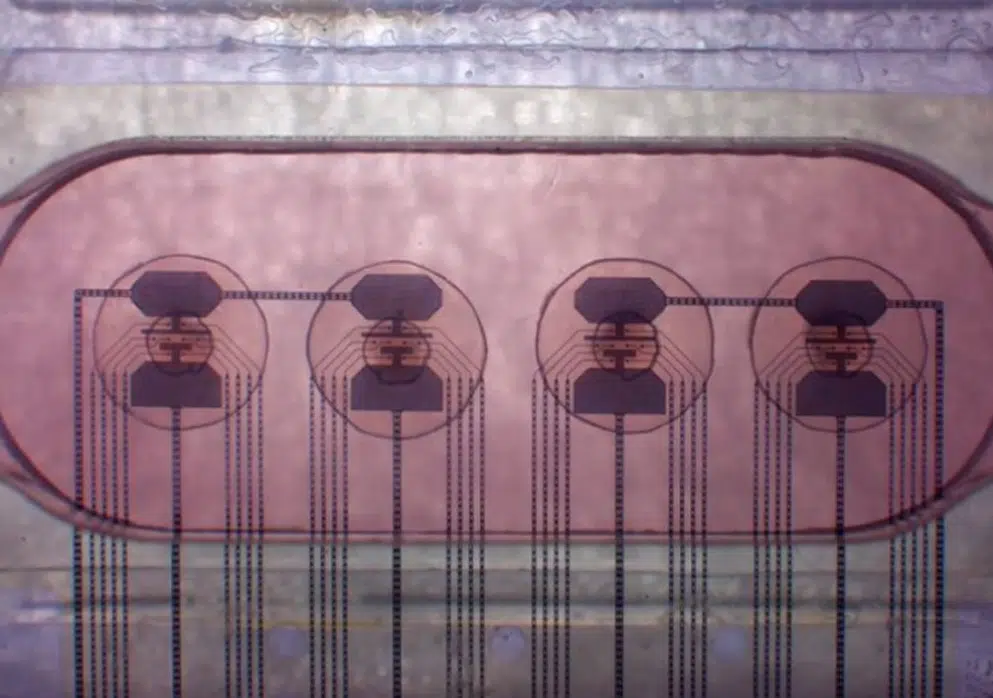Scientists connect 16 mini human brains to create a ‘living computer’
- Scientists have created a ‘living computer’ using lab-grown human brain cells
- The ‘living computer’ uses a lot less energy than normal processors
- Its creators say it could help lower carbon emission in the tech industry
Published on Jun 13, 2024 at 1:09 PM (UTC+4)
by Claire Reid
Last updated on Jun 13, 2024 at 6:24 PM (UTC+4)
Edited by
Tom Wood
A Swiss tech firm has created a ‘living computer’ by connecting up lab-grown human brains to form a processor.
Scientists at FinalSpark have achieved a ground-breaking world-first after linking up 16 organoids – or clumps of brain cells if you prefer – which can now send information to each other.
The organoids, which come from stem cells, are tiny, self-organized tissue cultures. These cultures can be made to replicate much of the complexity of an organ – such as the brain.
The scientists took these cells and cultivated them for around a month until they formed features like the neurons in our brains.
READ MORE! Finding out how Neuralink actually works is taking many by surprise
How do these ‘mini brains’ work?

The teeny brains FinalSpark used, were made up of an estimated 10,000 living neurons.
The ‘brains’ are trained using doses of dopamine as a ‘reward’ for doing certain tasks correctly.
Eight electrodes, surrounding the organoids, are able to both measure activity and stimulate the neurons via a current sent through them by the researchers.
It may sound a little like a Black Mirror storyline, but the team at FinalSpark says the new processor uses more than one million times less energy than current processors, which could make a big impact amid an energy crisis.
To give that statement some context, comparing it to a Hewlett Packard Enterprise Frontier, the experts said that for the same speed and 1,000 times more memory, the human brain uses just 10 to 20 watts, compared to the computer, which would be using 21 megawatts. So quite a difference then.
With ongoing fuel shortages and supply chain disruptions, as well as a move towards sustainable and renewable energy, there could very well be a gap in the market for processors such as these.
‘This idea is common in science fiction.’
In an interview with the Daily Mail, Doctor Fred Jordan, co-CEO of FinalSpark, said: “This idea is common in science fiction, but there hasn’t been a huge amount of real research into it.”

In a statement on the company’s website, the team added: “We hope that with our work we will be able to create biocomputers, which will revolutionize not only technology but also the energy sector and will contribute to the reduction of CO2 emissions without compromising the progress of technology.”
News of FinalSpark’s ‘living computer’ comes just weeks after the first Neuralink patient was live-streamed while playing chess with his mind.
For those not in the know, Neuralink is a neurotechnology company founded by Elon Musk, whose goal is to develop implantable brain–computer interfaces that people with limited mobility can use.
Human trials are currently underway after the FDA granted approval back in May last year.
I don’t think I’ll be signing up anytime soon.
DISCOVER SBX CARS: The global premium car auction platform powered by Supercar Blondie

Claire Reid is a journalist who hails from the UK but is now living in New Zealand. She began her career after graduating with a degree in Journalism from Liverpool John Moore’s University and has more than a decade of experience, writing for both local newspapers and national news sites. Claire covers a wide variety of topics, with a special focus on cars, technology, planes, cryptocurrency, and luxury.




